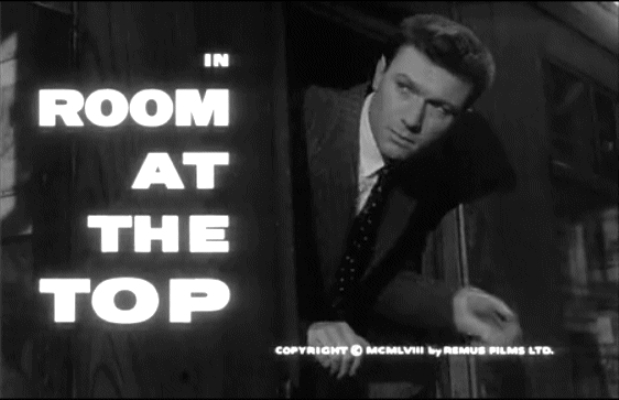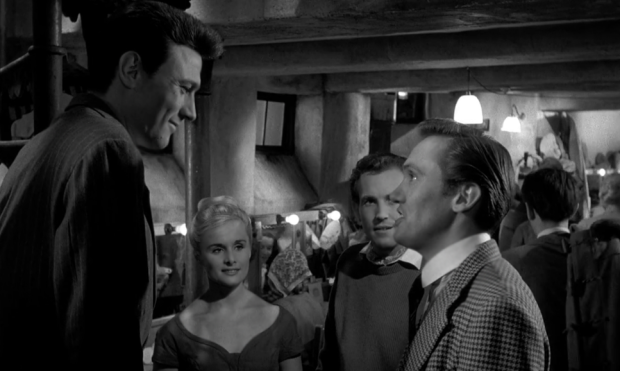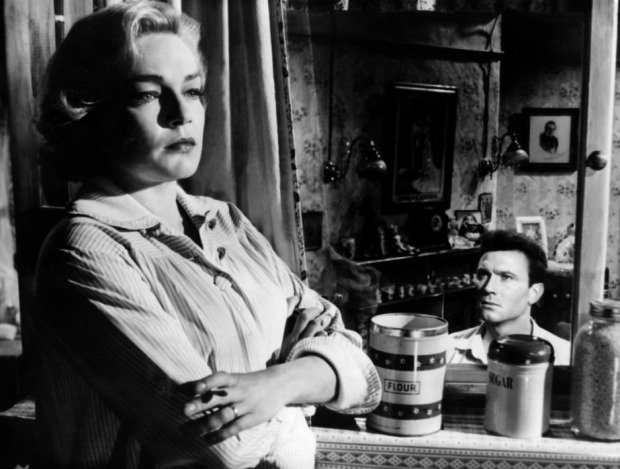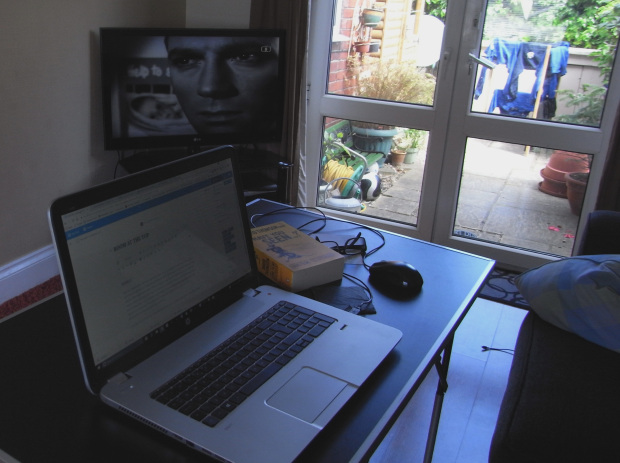
This is a superb film. We both agreed on that. It’s one of those works where everything just comes together as a coherent whole and, although it has a 115 minute running time, long by Film Night standards, it never drags or sags in the middle. We weren’t the only ones to admire Room at the Top: It received six Academy Award nominations including Best Actress, Best Actor and Best Supporting Actress for Hermione Baddely, who only appears on screen for 2 minutes and 32 seconds, making it the shortest ever performance to be nominated for an Oscar.
Although the picture was released in 1959 the story actually takes place in the late 1940s, a chronology that can be worked out by careful attention to dialogue details, because relatively young men speak about their wartime experiences. Chris C did the math.

The first things we see during the opening credits are Joe Lampton’s (Laurence Harvey) socks propped nonchalantly yet confidently on a railway carriage seat as his train pulls into the Yorkshire town of Warnley. Leaving behind the dull, poverty ridden slums and factories of his hometown Dufton, Joe has come to take a job at the Borough Treasurer’s Department.
From the second he claps eyes on Susan Brown (Heather Sears), daughter of Warnley’s industrial bigwig, he is infatuated, not only with her personal charms but also in her potential as a pathway to his dreams: A large house, a large bank balance and respect. Mr and Mrs Brown (Donald Wolfit and Ambrosine Philllpotts) send Susan abroad to prevent Joe getting his grubby, working class hands on her.
The genius of the piece is the casting of Simone Signoret as Alice Aisgill, a French woman trapped in both an unhappy marriage and a northern nothingness of a town. John Braine‘s book has Alice as a Yorkshire woman with a progressive sexual outlook, but Signoret adds a calm, knowing intelligence to the role. Her assured acting and the sensuality she exudes is the centrepiece around which the rest of the drama revolves. She is older than Joe, but the two fall in deep together. Her husband finds out, refuses a divorce and threatens to ruin Joe.

In the end Joe marries a pregnant Susan, so he gets what he promised himself, but a tragedy has played out and true feelings lie unresolved and tattered. This delivers more depth than your typical Angry Young Man drama, with the strong female role of Signoret’s adding such relevance. For me a key scene is Alice admitting to posing naked for an artist when she was younger. Joe goes ballistic, his sense of entitlement shattered and his sexual double standards ironically also laid bare.

I think we watched Room at the Top in rapt quietness. That’s always a good sign. There was no picking at spots in the narrative or pulling frayed bits of the script apart during the showing. It won an Oscar for Best Screenplay (Neil Paterson, with uncredited work by Mordecai Richler) and a nomination for Best Director for Jack Clayton. A sequel entitled Life at the Top was made in 1965. It also starred Laurence Harvey and was directed by Ted Kotcheff. Man at the Top, a 1970 television series following Joe Lampton in later life was broadcast by ITV. It lasted 23 episodes and starred Kenneth Haigh.
Be careful what you wish for.

Writing about Room at the Top
Advertisements Share this:





